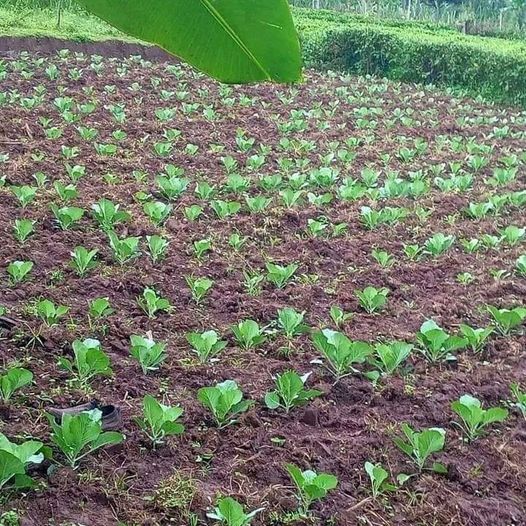Cabbage (Brassica oleracea) is a versatile and nutritious vegetable that belongs to the Brassicaceae family. It is closely related to other leafy greens like kale, broccoli, and Brussels sprouts. Growing cabbage can be a rewarding experience, especially when you follow the right steps and care for your plants properly. Here are some essential facts about planting cabbage:
1. Cool-Season Vegetable
Cabbage is a cool-season vegetable that thrives in cooler temperatures. It can be grown in both spring and fall seasons but prefers temperatures between 7°C to 24°C (45°F to 75°F).
2. Sunlight Requirements
Cabbage requires full sun for optimal growth. Ensure your cabbage plants receive at least 6 hours of direct sunlight per day.
3. Soil Preparation
Before planting cabbage, prepare the soil by incorporating organic matter like compost or well-rotted manure. Cabbage prefers fertile, well-draining soil with a pH between 6.0 and 7.5.
4. Planting Methods
Cabbage can be grown from seeds or transplants:
- Seeds: Sow seeds indoors 6 to 8 weeks before the last expected frost date.
- Transplants: Plant transplants outdoors after the danger of frost has passed.
5. Spacing
When planting cabbage, space the plants 30 to 60 cm (12 to 24 inches) apart, depending on the variety. Rows should be spaced about 60 to 90 cm (24 to 36 inches) apart.
6. Watering
Cabbage plants require consistent moisture. Water them regularly, providing about 2.5 to 3.8 cm (1 to 1.5 inches) of water per week. Avoid overwatering, as it can lead to root rot.
7. Mulching
Mulching around cabbage plants helps to conserve moisture, suppress weeds, and regulate soil temperature. Use organic mulch, such as straw or shredded leaves, to maintain soil moisture.
8. Fertilization
Cabbage is a heavy feeder and benefits from regular fertilization:
- Apply a balanced vegetable fertilizer before planting.
- Side-dress with nitrogen-rich fertilizer when the plants are about halfway to maturity.
9. Pest Control
Cabbage can be susceptible to pests such as cabbage worms, aphids, and flea beetles. Monitor your plants regularly and take appropriate measures to control pest infestations:
- Use insecticidal soap or introduce beneficial insects.
10. Harvesting
The harvesting time for cabbage varies depending on the variety and growing conditions. Typically, cabbage is ready to harvest when the heads are firm and reach the desired size. Check the specific variety’s maturity period to determine the best time to harvest.
By following these guidelines and providing the proper care, you can enjoy a bountiful harvest of healthy, delicious cabbage from your garden. Happy planting!
